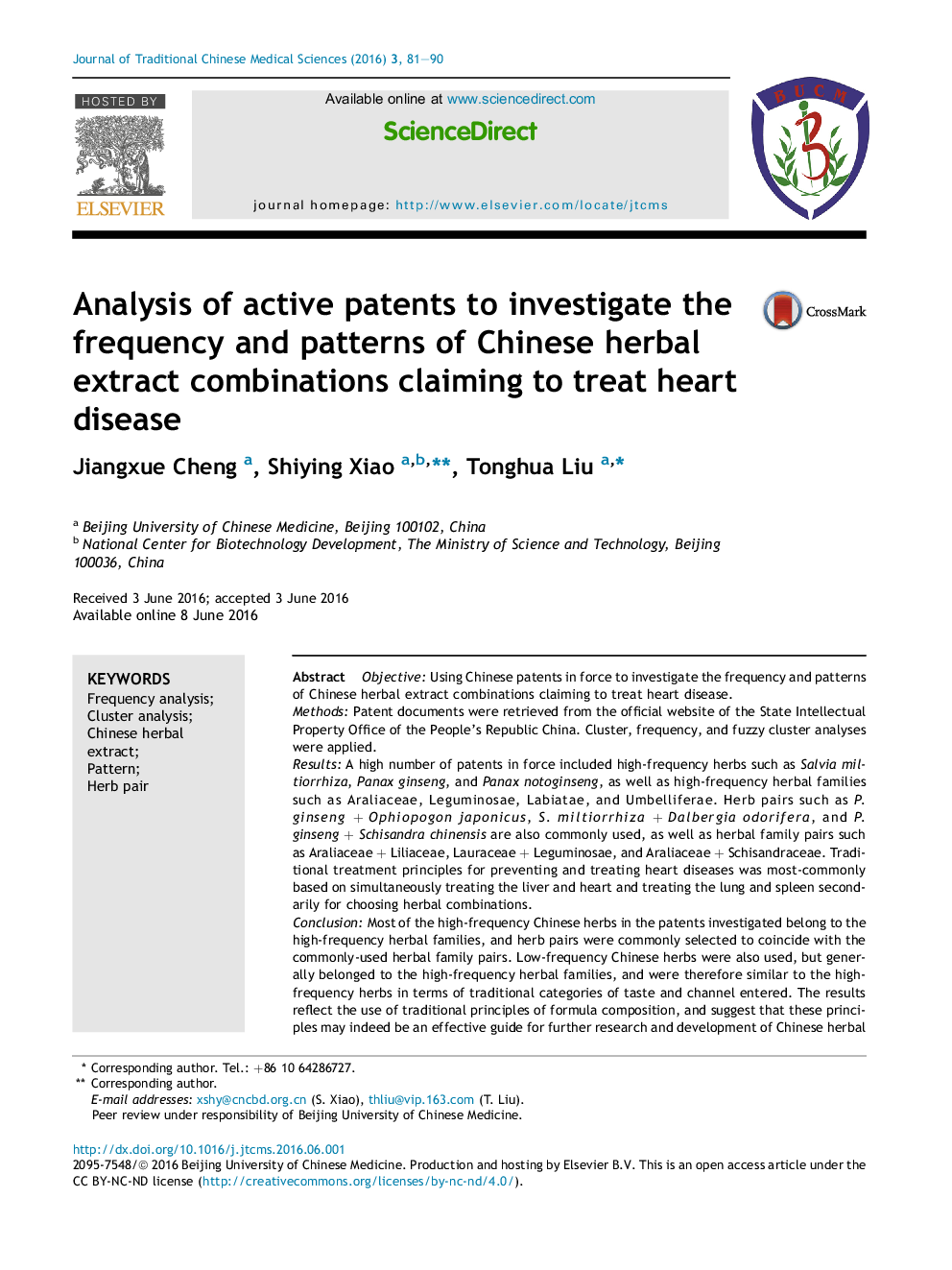| Article ID | Journal | Published Year | Pages | File Type |
|---|---|---|---|---|
| 1993084 | Journal of Traditional Chinese Medical Sciences | 2016 | 10 Pages |
ObjectiveUsing Chinese patents in force to investigate the frequency and patterns of Chinese herbal extract combinations claiming to treat heart disease.MethodsPatent documents were retrieved from the official website of the State Intellectual Property Office of the People's Republic China. Cluster, frequency, and fuzzy cluster analyses were applied.ResultsA high number of patents in force included high-frequency herbs such as Salvia miltiorrhiza, Panax ginseng, and Panax notoginseng, as well as high-frequency herbal families such as Araliaceae, Leguminosae, Labiatae, and Umbelliferae. Herb pairs such as P. ginseng + Ophiopogon japonicus, S. miltiorrhiza + Dalbergia odorifera, and P. ginseng + Schisandra chinensis are also commonly used, as well as herbal family pairs such as Araliaceae + Liliaceae, Lauraceae + Leguminosae, and Araliaceae + Schisandraceae. Traditional treatment principles for preventing and treating heart diseases was most-commonly based on simultaneously treating the liver and heart and treating the lung and spleen secondarily for choosing herbal combinations.ConclusionMost of the high-frequency Chinese herbs in the patents investigated belong to the high-frequency herbal families, and herb pairs were commonly selected to coincide with the commonly-used herbal family pairs. Low-frequency Chinese herbs were also used, but generally belonged to the high-frequency herbal families, and were therefore similar to the high-frequency herbs in terms of traditional categories of taste and channel entered. The results reflect the use of traditional principles of formula composition, and suggest that these principles may indeed be an effective guide for further research and development of Chinese herbal extract combinations to prevent and treat heart diseases.
